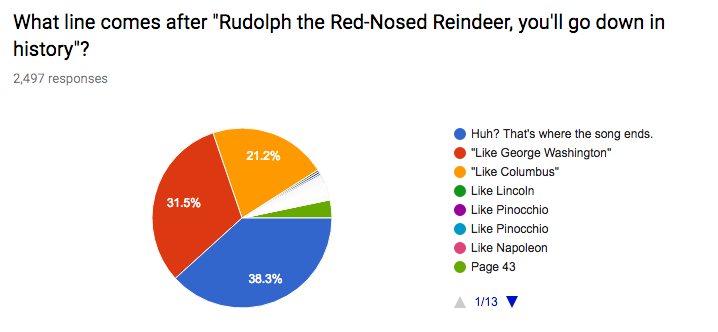The Weekender, September 15, 2017

1) “The Strangest Sights Cassini Saw: Postcards From Saturn” (NPR, 5-minute video, September 2017). About when this email hits your inbox, the Cassini mission to Saturn will end. Cassini, an unmanned robotic spacecraft, has spent the last 19 years traveling to and studying Saturn and its moons, collecting incredible amounts of new data in the process. (The trip took more than six of those years!)
At just before 8 AM ET today, Cassini will be destroyed. Bringing Cassini back to Earth isn’t an option (it’s running out of fuel), but leaving it in Saturn’s general area isn’t either, as it may collide with one of the moons, and that could result in some type of biological contamination. Instead, the spacecraft is being directed to plunge into Saturn’s atmosphere, burning up in the process. As a neat side effect, it’s going to capture data about Saturn’s atmosphere — data we’ve never before been able to obtain — and send it back to us here on Earth in real time. (There’s a lag, of course, as the information can only move so quickly.)
This is a video of stitched-together photos from Cassini — not all 400,000 photos, of course, but there are a lot in there! Want more on this mission? There’s the NASA livestream of the mission’s fiery end and a great NPR interview (4:37) with planet scientist Jonathan Lunine, who has worked on the project for its entire run.
2) Support Now I Know: As many of you already know, researching, writing, and (save for the daily typo or two) editing Now I Know is a pretty big endeavor on my part. Keeping the project financially sustainable is a battle, and to that end, I’ve tried many different avenues.
One of them — a major one at that — is my ongoing Patreon campaign. It’s an old-style patronage campaign, where readers such as yourself support Now I Know through a monthly pledge. A $5 a month pledge comes out to about 25 cents per article I send; a $1 a month pledge is roughly a nickel. Please consider supporting Now I Know through Patreon by clicking here. It’s entirely optional and you’re under no obligation to do so, so don’t feel bad if you can’t or don’t want to. But if you do, please know it all adds up, and I greatly appreciate your support. Thanks!
3) The Now I Know Week in Review:
Monday: The Squeegee that Saved Lives. A 9/11 story.
Tuesday: The Power of Being Bored. I’ll use this opportunity to mention the book “Bored and Brilliant” again — it’s a good pickup.
Wednesday: What Happens When a Monkey Takes an Awesome Picture of Itself? This is actually about copyright more than anything else, but it’s still a good story. And the picture is incredible.
Thursday: How a Good Breakfast Helped Create a Sneaker Empire. Waffles, meet Nike sneakers.
4) “I downloaded an app. And suddenly, was part of the Cajun Navy. ” (Houston Chronicle, 14 minutes, September 2017). This is the story of a woman who, seemingly easily, became a volunteer dispatcher of rescuers in Houston during Harvey. It’s her first-hand account of the conversations — many of which do not turn out well, so please don’t read it if you are sensitive to such stories.
WeekenderAdUnits
5) “What Does an Innocent Man Have to Do to Go Free? Plead Guilty. ” (Pro Publica, 29 minutes, September 2017). The subhead: “A case in Baltimore — in which two men were convicted of the same murder and cleared by DNA 20 years later — shows how far prosecutors will go to preserve a conviction. ” Also contains some graphic moments as it describes the crimes (including in the paragraph below).
On Oct. 15, 2008, James Owens shuffled, head high despite his shackles, into a Baltimore courtroom, eager for his new trial to begin. Two decades into a life sentence, he would finally have his chance to prove what he’d been saying all along: The state had the wrong man.
Owens had been convicted of murdering a 24-year-old college student, who was found raped and stabbed in her home. Then he’d been shunted off to state prison until DNA testing — the scientific marvel that he’d watched for years free other men — finally caught up with his case in 2006. The semen that had been found inside the victim wasn’t his. A Maryland court tossed his conviction and granted Owens a rare do-over trial.
State prosecutors balked, insisting they still had enough evidence to keep Owens locked away and vowed to retry him. But they had also offered him an unusual deal. He could guarantee his immediate release from prison with no retrial and no danger of a new conviction — if he’d agree to plead guilty. The deal, known as an Alford plea, came with what seemed like an additional carrot: Despite pleading guilty, the Alford plea would allow Owens to say on the record that he was innocent. The Alford plea was an enticing chance for Owens, by then 43, to move on as a free man. But he’d give up a chance at exoneration. To the world, and legally, he’d still be a killer.
6) “Mapping George vs. Colombus from Rudolph the Rednosed Reindeer” (Lines in the Pond, September 2017). A few weeks ago, I asked you all to take a quick poll for me, and answer “what line comes after ‘Rudolph the Red-Nosed Reindeer, you’ll go down in history’?
At long last, results from my survey! The aggregate results are in the image below (“Page 43” is a collection of one-off responses; consider it the “other” bucket). But wait, there’s more! One reader — Jacob — volunteered to put the geographic data together. Hit the link to find it. If you’re on a computer and not your phone, click the map to see a county-by-county breakdown of the data (assuming there was data in that area).

Have a great weekend!

